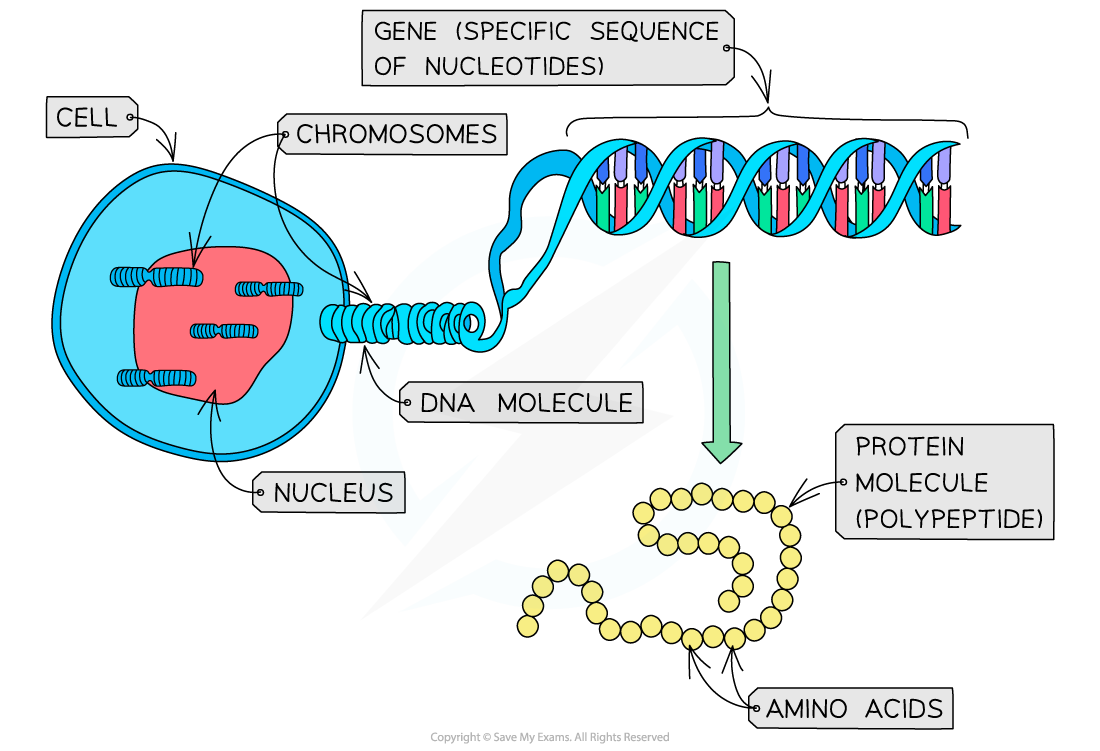Genes & Polypeptides
- A gene is a section or length of DNA that codes for a polypeptide
- Genes are heritable factors that influence specific characteristics (via the polypeptides produced)
- Characteristic means a feature of an organism like height in pea plants or blood group in humans
- Heritable means genes are factors that pass from parent to offspring during reproduction
- A gene occupies a specific position on a chromosome
- The gene for a particular characteristic is always found at the same position or locus (plural is loci) on a particular chromosome

A gene consists of a length of DNA found in the nucleus. This length of DNA causes a specific characteristic by coding for specific polypeptides.
Exam Tip
Remember – each chromosome in a human cell nucleus contains one very long DNA molecule. This DNA molecule is made up of thousands of specific nucleotide sequences called genes that code for specific polypeptides.
Loci
- A single chromosome contains several hundred or thousands of genes
- Dependent on the length of the chromosome
- Through experiments and genetic mapping techniques, scientists were able to work out the specific physical location of a gene on a chromosome
- The location of a gene on a chromosome is known as its locus (the plural of locus is loci)
- Each gene occupies a specific locus so that the gene for a particular characteristic is always found at the same position on a particular chromosome
Comparing the Number of Genes
- Species vary in the number of genes they have
- The number of genes a species has is not related to the size/complexity or even the sophistication of the organism
- Because genes can vary in length
- Counting the exact number of genes in a species is difficult, so you may see conflicting numbers in different sources
- Humans have around 20,000 genes
- Dogs have 19,000 genes, which is less than humans
- A water flea has more than a human with 31,000 genes
- E. coli, a bacterium, has only 4,300 genes
- A rice plant has 41,500 genes
Comparing the Number of Genes between Different Organisms Table

Exam Tip
For the comparison of the number of genes you need to know at least one plant and one bacterium, and at least one species with more than humans and one species with fewer genes than humans.The "number of genes" should not be referred to or confused with "genome size" as this term is used for the total amount of DNA (usually measured in the number of base pairs). Much of a eukaryotic species' genome does not code for polypeptides.
